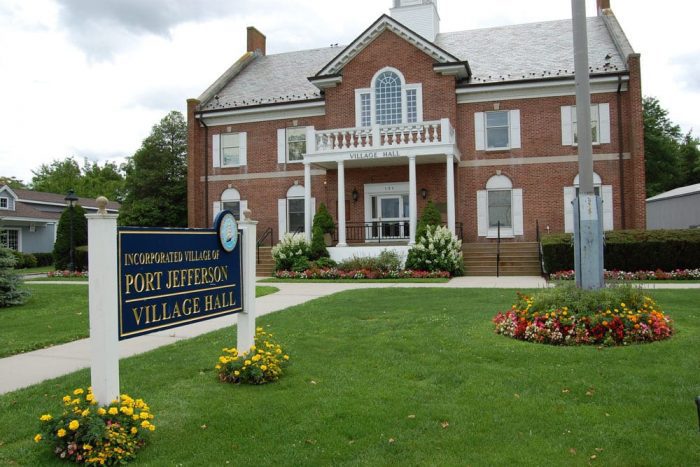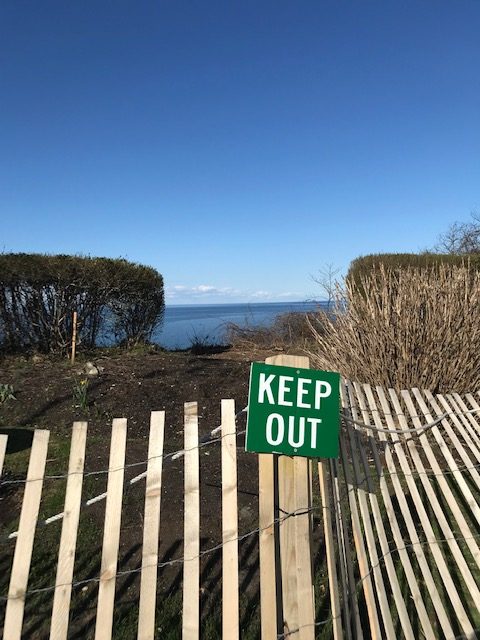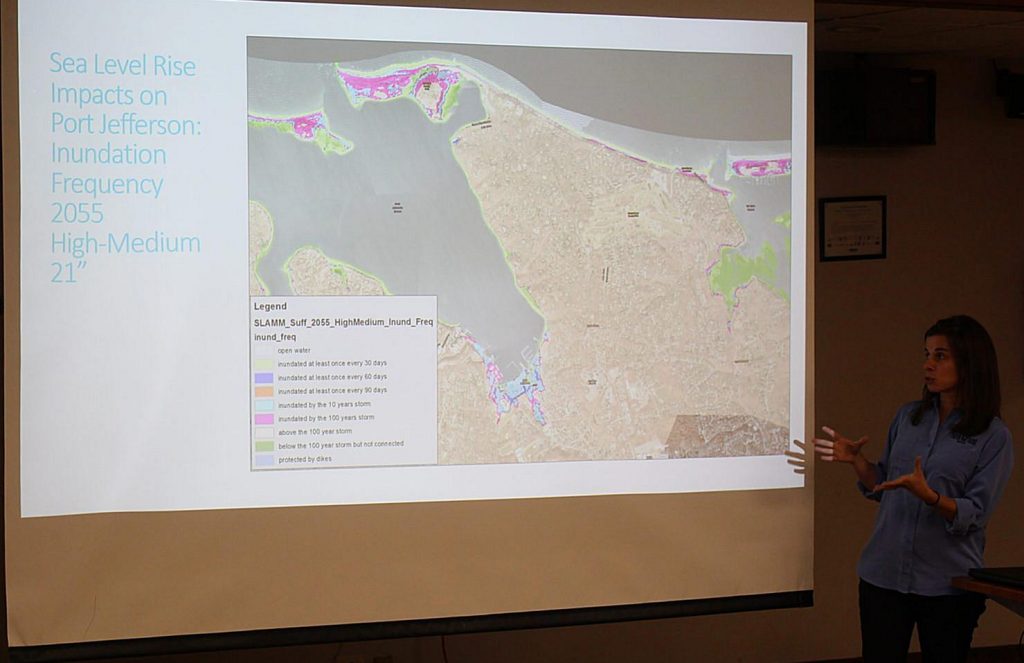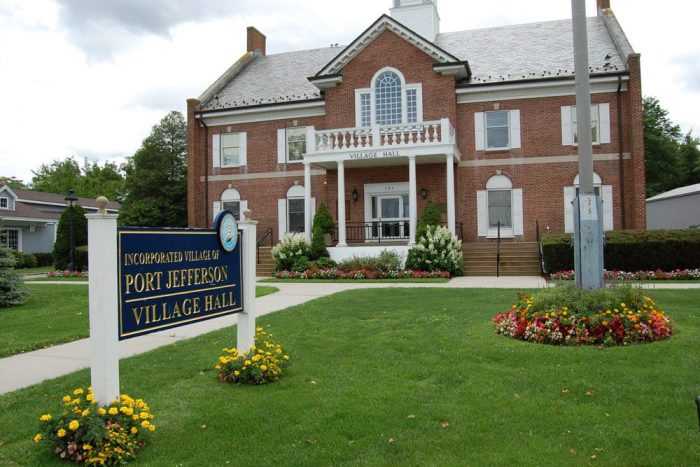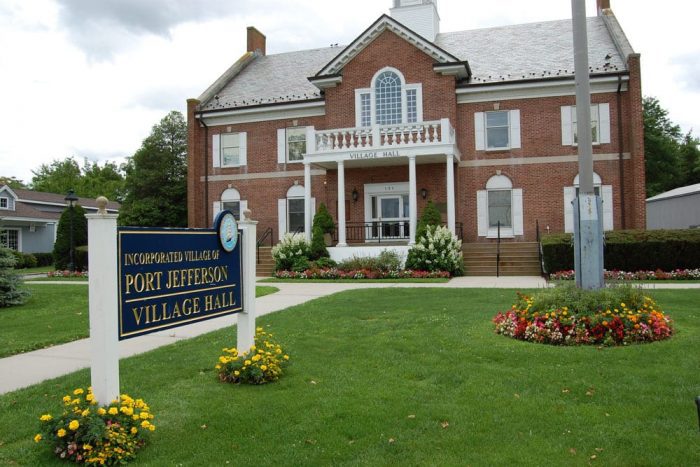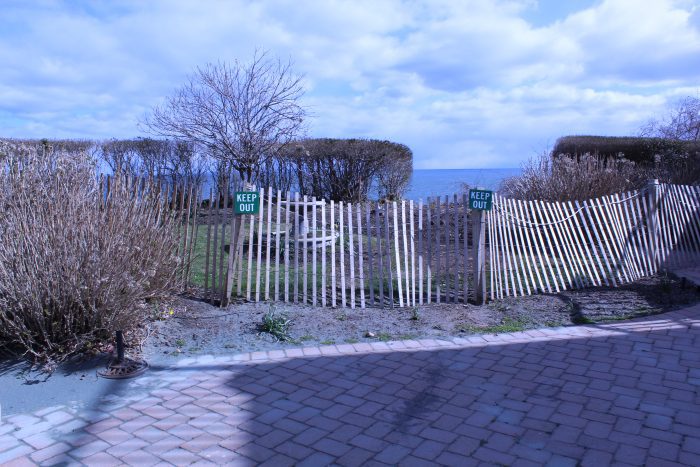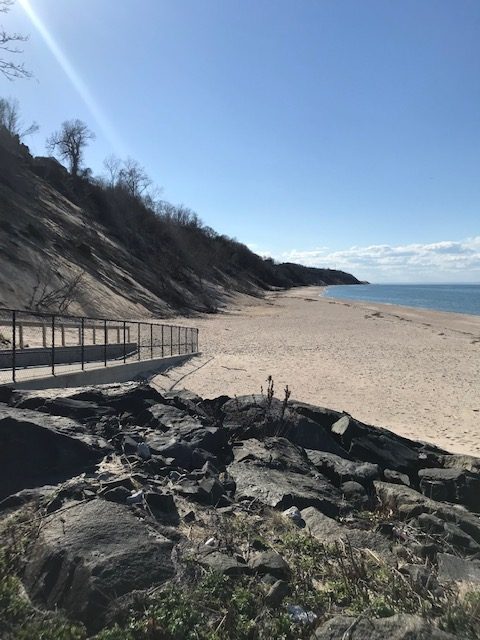The Port Jefferson Village Board met on Monday, Oct. 3, for an afternoon packed with important business.
Business meeting

For its first order of business, the board unanimously approved a bond anticipation note to finance construction for improvements at the Old Homestead/Oakwood Road recharge basin. The BAN will enable construction to begin without the village having to draw from its operating budget.
This project, according to Mayor Margot Garant, is primarily subsidized through a grant from the Federal Emergency Management Administration.
“We’re still waiting for the grant to come in from FEMA, but we have to pay the bill,” Garant said. “Hopefully, that money comes in before the end of the year.”
The board approved Garant’s appointment of Shane Henry to the Architectural Review Committee. Deputy Mayor Kathianne Snaden, trustee liaison to ARC, anticipated Henry’s expected contributions to the committee.
“He’s young, enthusiastic, and he wants to get more involved,” Snaden said. “I think he will be a great addition.” Garant added that she is looking forward to drawing from Henry’s contracting and historic preservation background.

With trustee Lauren Sheprow voting “no,” the village board approved a 4-1 resolution for the 2023 rate increases for the Port Jefferson Country Club. Stan Loucks, trustee liaison to the country club, said these rate increases are based upon a unanimous recommendation from the Country Club Management Advisory Committee.
The rate increases, according to Loucks, will enable the country club to make renovations to bunkers, improvements to cart paths and cover other unforeseen expenses.
“The rates that have been presented will increase our revenue by $100,000,” Loucks said. “That is an … increase in the overall budget, which I feel — I hope — is adequate.”
Defending her vote against the resolution, Sheprow expressed uneasiness about membership rate increases. She advocated exploring and exhausting other options for raising revenue before placing added costs on members.
“When I was the chair of the CCMAC, I did not agree with raising membership rates because I felt like there was an opportunity to find new revenue … without putting the revenue on the backs of the members,” Sheprow said. “We’re playing on this product that isn’t the A-plus product that it’s been. It’s kind of a C-level product, and we’re asking our members to come back next year and pay more for something that they don’t have yet.”
General meeting

After a brief interim for an executive session, the trustees moved upstairs for the general meeting. During that time frame, there were several exchanges between the public and the village government.
Chief of code enforcement Fred Leute reminded residents to drive carefully on village streets as schools are again in session. He also reported a speeding issue on Brook Road near the high school. “Brook Road is not a road you want to go fast on,” he said. “When you go down that hill, slow down.”
A Suffolk County Police Department representative told Port Jefferson residents to remain alert to the ongoing crime trends of catalytic converter thefts and phone call scams.
During her report, Sheprow announced that she would present findings from her internal communications audit at a future meeting. She also reported that the Country Club Social/Hospitality Task Force has already met several times and is working with the restaurant management of The Waterview to “create a more welcoming, accessible and fun environment up at the country club.”
Trustee Rebecca Kassay reported that she is continuing to coordinate with Snaden on a “complete streets concept” for Port Jefferson.

“I am highly recommending that the village looks into investing into a study, which can be anywhere between $30,000 and $80,000,” Kassay said. “This would be something that benefits all residents. It would assess how to make the village more walkable and potentially more bikeable as well.”
Loucks gave an update from the parks department regarding removing vessels from village racks. “The vessels need to be removed by November 1,” he said.
Snaden announced her effort to coordinate more closely with the Greater Port Jefferson Chamber of Commerce and the Port Jefferson Business Improvement District.
“We’re going to have quarterly meetings moving forward just to make sure that everyone is on the same page with their activities and their events,” the deputy mayor said. “We can all collaborate and bounce ideas off each other, let each other know what we’re all doing.”
Garant gave a detailed report on several significant initiatives within the village government. There are ongoing discussions about giving a proper name to Station Street, a block in Upper Port opening later this month.

“There will be a conversation about what we should call this new street as the new gateway to Port Jefferson,” the mayor said. “We do have a ribbon-cutting on the calendar for October 26 … It will be a great new start to a total revitalization of Upper Port.”
Bids for an upper wall to stabilize the East Beach bluff are due this Friday, Oct. 7. Garant announced that once the board has the final cost estimates, it will decide whether to approve the upper wall or retreat inland. For more on this local issue, see The Port Times Record’s story, “Port Jeff mayor estimates $3M for upper wall, trustees debate erosion mitigation strategy at village country club,” Sept. 29 edition, also tbrnewsmedia.com.
During the public comment portion at the end of the meeting, village resident Michael Mart advised the board to consider the future instead of the past when deciding upon the East Beach bluff.
“Rather than put all of our efforts into saving the past, please look forward to creating the future that we might want here,” he said. “And in doing that, I think it’s important the residents have an opportunity to express their views on the final decision, and maybe even, like with the school board [proposed capital bond projects], have an opportunity to vote on the final decision.”
To watch the full video of the general meeting, visit the village’s official YouTube channel: www.youtube.com/watch?v=6bwpxXtRxmA

